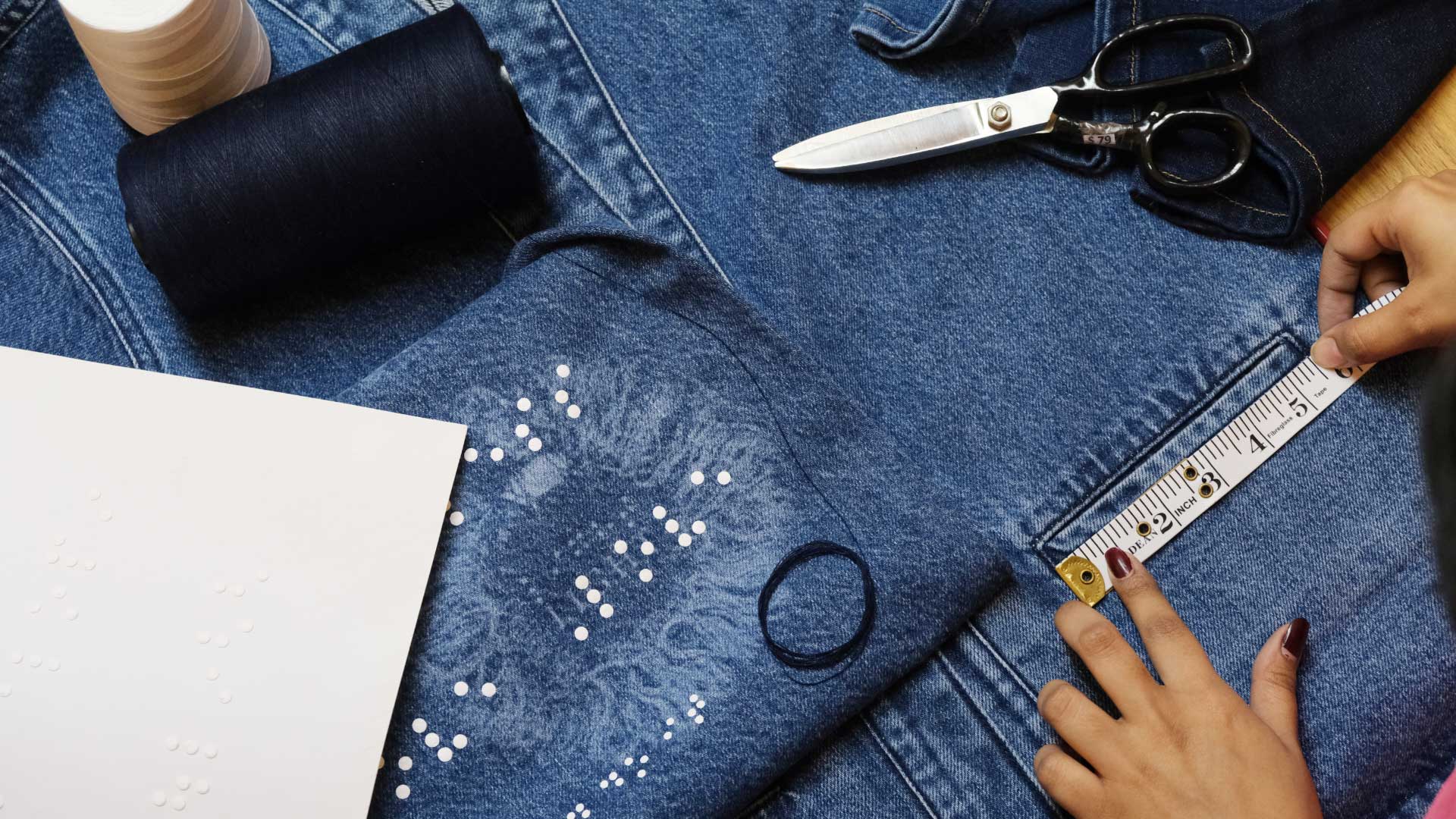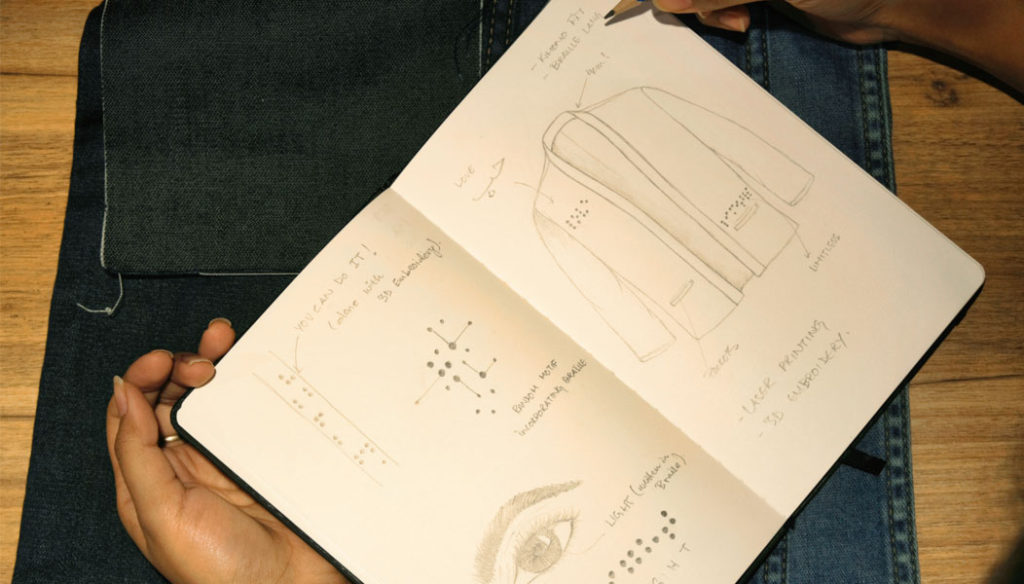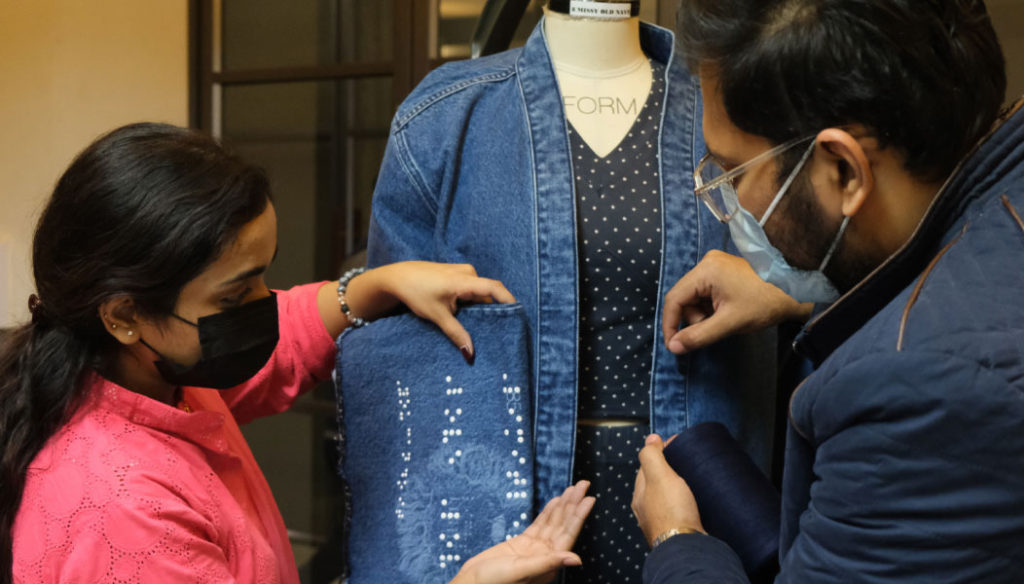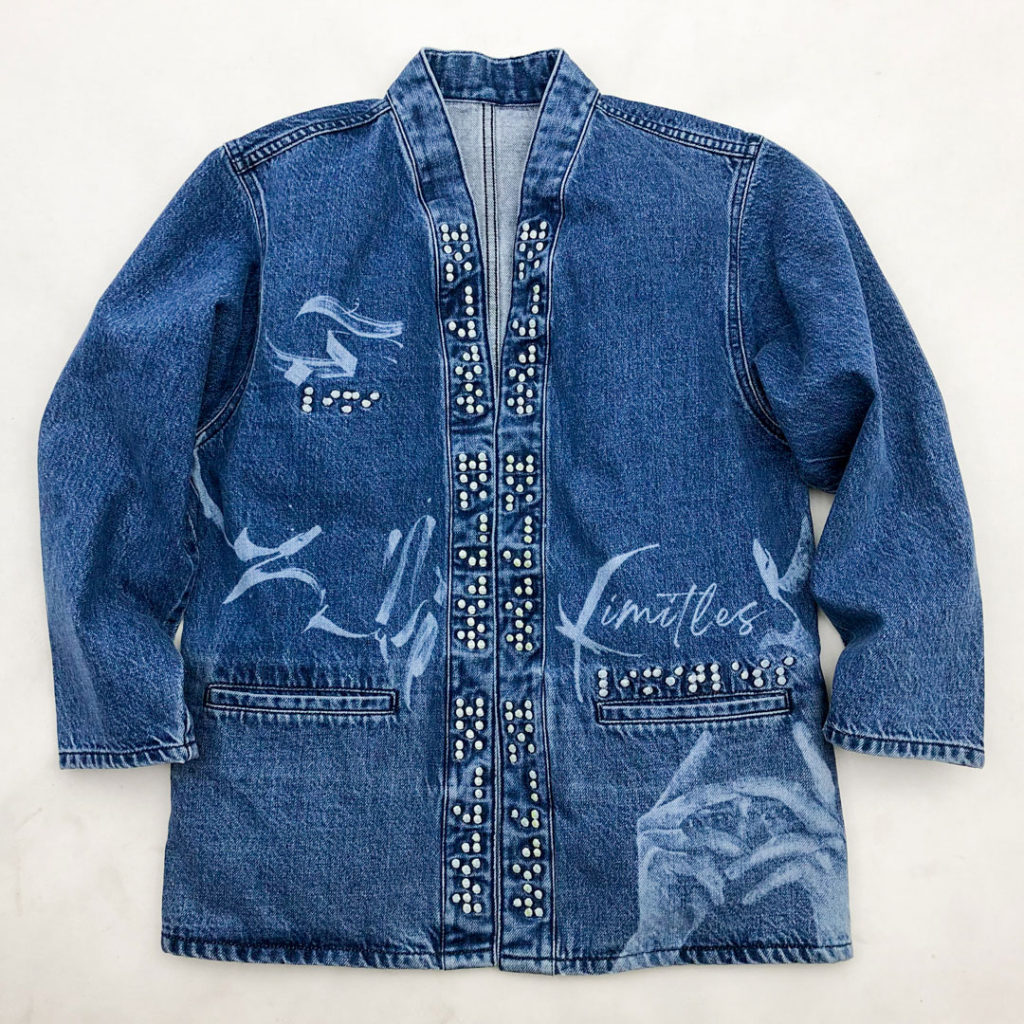
The fashion industry has focused on “the look” for the longest time. It has reduced creative expression to only what can be seen and for those who can see, but the human experience isn’t only for those with sight. It is also for those who don’t, and fashion can play a big part in this with an enormous potential for creative expression.

Does Fashion need Empathy to become more Inclusive?
Designers and producers need to start building a relationship with fashion that isn’t exclusively ableist. It’s 2022, and time to reorient the ways style can be creatively expressed and time to be more inclusive of people with different abilities.
Fashion for the visually impaired is often ignored with the assumption that they don’t care about the colour of their clothes or the cut. However, everyone wants to look their best; they have opinions about the kind of clothes they feel their best in, if not look in.
AGI Denim’s Innovation
Lubaba, a product developer at AGI Denim, recognized a significant gap in the industry and took one step forward to fill this void in the fashion and denim business. With an innovative collaboration with NOWPDP, Lubaba and her team created 40 kimono jackets embroidered with braille messages and typography.
The creative process is rooted in empathy, and it starts with repositioning and re-aligning the team with an inclusive vision. By stepping out of their comfort zones, the designers were able to think about different perspectives and the experiences of others – in this case, the visually impaired.

A Style for the Senses
The sense of touch and comfort are essential for the visually impaired. Keeping their needs in mind, Lubaba and the team started brainstorming designs. These had to be not just comfortable and easy to wear, regardless of body type, but also provide meaning to the wearer – making fashion accessible to all.
The Concept:
Using tools like laser printing to add a dash of design and typography and braille using 3D embroidery ensured the Kimono jackets turned into interactive pieces for both the wearer and the people around.
The aim was to produce something that could be appreciated by the sighted and yet meaningful to the visually impaired. Artwork done with the laser is the visual representation of Braille phrases incorporated with 3D embroidery.
The braille pattern was carefully crafted with motivating messages to encourage fashion as a creative outlet for the sighted and the visually impaired. Since many people are not trained to understand braille, the laser art on the jackets was made to be self-explanatory. A combination of typography and visuals communicated uplifting messages such as ‘Limitless”, ‘You can do it and ‘Love’. The braille also translated into “Fashion for all”- almost like a tiny love letter from the industry.
While this is one small attempt to expand the fashion industry’s horizons and represent the differently-abled, it echoes a powerful sentiment that will significantly impact the way clothes get produced in Pakistan.

The Results
We asked Lubaba, the lead designer for this project, how visually impaired persons received these jackets.
“It was bliss for me when I saw the joy and happiness on their faces. They felt the fabric, rapidly trying to read the 3D embroidery as soon as I told them that the tactile surface was braille.
When I told them I especially chose this fit because there is no belt or button to fasten, just wear and go, they all agreed that they felt smart and confident after wearing the kimonos.” – Lubaba

This innovative design solution by AGI Denim is an essential step towards inclusivity and a way to inspire fashion to do more for the visually impaired and people with disabilities.